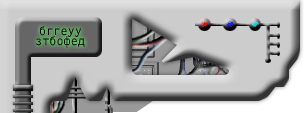|
The Abacus,
Abacus,
instrument used in performing arithmetic calculations. It consists essentially of a tablet or frame bearing parallel wires
or grooves on which counters or beads are moved. Each column—that is, each wire—represents one place in the decimal
system. The column farthest to the right is the ones column; the next column to the left is the tens column; and so on. In
each column, there are five beads below the crossbar, each of which represent one unit, and two beads above the crossbar,
each of which represent five units. For example, in the tens column, each of the group of five beads represents ten, and each
of the group of two beads represents fifty. Beads that are to be counted as part of a number are placed against the crossbar.
Many early civilizations used
the abacus. In ancient Roman culture it was a sand-covered wax tablet, marked table, or grooved table or tablet. A simplified
form of abacus was used in medieval England. It consisted
of a tablet ruled into spaces representing the positions of the counters; coins, buttons, stones, or other small objects were
moved to make the calculations. The checkered tablecloth, from which the name Exchequer is derived, was originally a calculating
device like the ruled tablet. The abacus is still used in China and Japan.
 |
 |
|
|
So primitive!
This is an abacus! It is used for mathamatical calculations!
|
|
 |
 |
|

